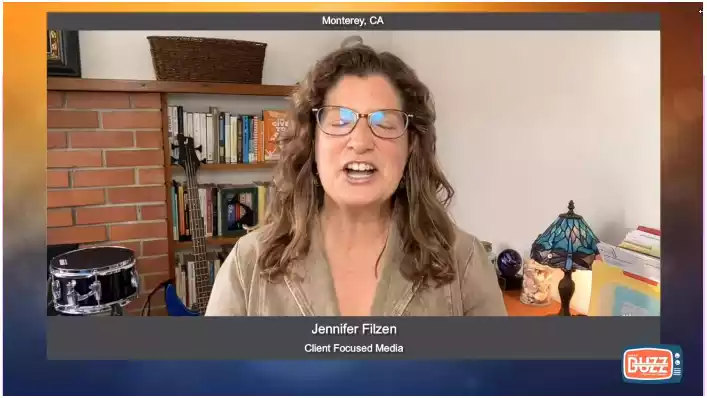Educating Patients on Prior Authorization: Knowledge for Better Healthcare
Discover the importance of educating patients on prior authorization to improve their healthcare experience and streamline medical processes. Learn how to empower patients with essential knowledge. Read more!

Imagine a world where managing healthcare tasks is seamless, eliminating the long waits and tedious processes. Understanding what is the difference between a referral and a prior authorization is essential for navigating the healthcare system efficiently. A referral is a recommendation from a primary care doctor for a patient to see a specialist or receive certain medical services, ensuring that the patient receives the appropriate care within their network. In contrast, prior authorization is an approval from the insurance company before specific services or medications are provided, confirming that the proposed care is covered under the patient’s plan. Let’s explore the nuances and importance of each process in ensuring smooth and effective healthcare delivery.
Let’s dive in!
Table of Contents
Educating Patients on Prior Authorization
 Navigating the world of healthcare can be overwhelming for patients, especially when it comes to grasping the details of insurance policies and processes. One challenging aspect is authorization. Providing patients with information on this process can empower them to take a proactive approach to their healthcare journey and help ease some of the associated stress and uncertainty. This article seeks to explain authorization, covering its definition, significance, operation, and strategies for effective management.
Navigating the world of healthcare can be overwhelming for patients, especially when it comes to grasping the details of insurance policies and processes. One challenging aspect is authorization. Providing patients with information on this process can empower them to take a proactive approach to their healthcare journey and help ease some of the associated stress and uncertainty. This article seeks to explain authorization, covering its definition, significance, operation, and strategies for effective management.
What is Prior Authorization?
Prior authorization, or preauthorization or precertification, involves health insurance companies requiring approval for medications, tests, procedures, or treatments before they are administered to the patient. The main objective is to ensure that the proposed service is medically necessary and falls within the coverage of the patient’s insurance plan.
Patients commonly come across authorization in situations:
- Prescription drugs, costly medications, or those not listed on the insurer’s formulary.
- Specialized medical. Surgeries.
- We have advanced imaging services like MRIs or CT scans.
- Durable medical equipment such as wheelchairs or oxygen tanks.
Why is getting authorization essential in healthcare?
Prior authorization plays a role in the healthcare system for the following reasons:
- Managing Costs: Insurance companies can reduce unnecessary medical expenses by requiring approval. This process also helps evaluate whether cost-effective treatment options are available.
- Maintaining Quality: Ensuring that treatments and medications are essential helps minimize the risk of treatment, which could result in complications or side effects.
- Allocating Resources: Authorization aids in allocating healthcare resources, ensuring patients receive the proper care at the right time.
- Checking Benefits: This confirms that the patient’s insurance plan covers the proposed service, preventing any expenses for them.
The Prior Authorization Process
Understanding how the authorization process works can minimize obstacles and delays. Here is a step-by-step guide:
Step 1: Prescription or Recommendation
The process typically kicks off when a healthcare prescribes a medication or suggests a treatment that necessitates prior authorization.
Step 2: Request Submission
The healthcare provider’s office will send a request for authorization to the patient’s insurance company outlining the reasons behind the proposed treatment. This request usually includes:
- The patient’s medical background.
- We are supporting medical records.
- The provider’s reasoning for the suggested treatment or service.
Step 3: Evaluation by Insurance Provider
Upon receiving the request, the insurance company examines the documentation. This evaluation can take days to weeks, depending on the case complexity and the insurer’s processing times. The insurer may have criteria and guidelines for approval.
Step 4: Decision
Following the review, the insurance company will reach a decision:
- Approval: If approved, both the patient and provider will be informed. Subsequently, the patient can proceed with receiving the treatment or service.
- Denial: In case of denial, reasons will be provided by the insurer, and notifications about this decision will be sent to both the patient and provider.
What to Do If Your Prior Authorization Gets Denied
If your request is denied, keep hope. There are steps you can take to address the situation:
- Understand the Denial: read the letter to know why it was denied. Common reasons include justification, experimental services, or treatments not covered by your plan.
- Talk to Your Healthcare Provider: Talk with your prescribing doctor about the denial. They can provide details or documentation to support your case.
- Appeal the Decision: You have the right to appeal. The denial letter should guide you through the process, which may involve submitting documents and discussing the decision with your doctor and the insurance company’s medical reviewer.
- Explore Alternatives: If your appeal is unsuccessful, consider researching treatments that may be covered under your insurance plan.
Tips for Managing Prior Authorization

To help navigate the prior authorization process more smoothly, patients can consider the following tips:
- Stay Informed: Keep up-to-date with your insurance policy details, including what services typically require prior authorization. This information is often found in the insurance plan’s member handbook or on the insurer’s website.
- Communicate Early: As soon as a provider recommends a treatment that may need prior authorization, start the conversation with your insurance company. Early communication can prevent surprises and delays.
- Be Proactive: Don’t hesitate to follow up with both your provider’s office and your insurance company regularly to check on the status of the authorization request.
- Keep Records: Maintain thorough records of all communications with healthcare providers and insurance companies. This includes copies of submitted forms, medical documentation, and any correspondence received.
- Know Your Rights: Familiarize yourself with patient rights and appeal processes. Understanding the steps and your rights can be empowering.
I'm very thankful for Portiva who I know is looking after my practice while I'm gone the virtual assistants can manage prescription refills, documents they can triage patients and just kind of answer administrative questions and they can handle a lot on their own. But also, they're very good about contacting me if there's any emergency or anything I need to attend to. So I'm very thankful for Portiva they can help almost any provider almost anywhere and it really allows for some good work-life balance as I'm getting to experience right now at my family farm so I'm very thankful for Portiva and I'm very happy to use their services"

Board Certified Family Medicine Physician

Portiva's Virtual Medical Assistant - I have all the support I need. There's somebody checking my email, any patient messages. Patients are still able to schedule and handle any scheduling issues and any kind of billing that needs to still go through. Portiva hands handles it all for me. I have support i have somebody that I can access 24/7 pretty much. It's all very seamless. If somebody has an emergency or needs a medication called in. I know that the va's at portiva will handle that for me.

Board Certified Family Medicine Physician

How Providers Can Help
 Healthcare providers play a pivotal role in the prior authorization process. Here’s how they can assist patients:
Healthcare providers play a pivotal role in the prior authorization process. Here’s how they can assist patients:
- Clear Communication: Providers should explain to patients why prior authorization is needed and what the process will entail. Clear, concise communication helps set patient expectations from the outset.
- Timely Submission: Expedite the submission of prior authorization requests by ensuring all necessary medical documentation is included. This reduces the potential for delays or denials due to incomplete information.
- Advocacy: Providers can advocate on behalf of the patient by engaging in peer-to-peer discussions with the insurance company’s medical reviewers, especially in challenging cases.
- Education: Provide educational resources to patients about the importance of prior authorization and how to navigate the process effectively.
The Patient’s Role in Prior Authorization
While much of the prior authorization process is handled by healthcare providers and insurance companies, patients have a crucial role to play:
- Engagement: Actively engage in your healthcare by asking questions and understanding why certain treatments require prior authorization.
- Documentation: Ensure that all relevant personal medical records and history are accessible to your provider for submission.
- Follow-Up: Regularly follow up on the status of your prior authorization request to keep the process moving smoothly.
- Preparation: Be prepared for potential denial by understanding alternative options and the appeals process.
In conclusion
Prior authorization is an aspect of healthcare that helps manage costs, quality, and resources. While it serves a purpose, it can sometimes be challenging for patients and providers. Educating patients on the importance of authorization and providing guidance on navigating the process can minimize confusion and enhance the patient journey. Proactive involvement, effective communication, and knowledge of rights play roles in successfully handling prior authorization. Collaboration among patients, healthcare providers, and insurance entities ensures suitable healthcare delivery.
To learn more about pre-certification that can enhance your medical practice. Discover more about Portiva and unlock a world of possibilities by visiting our homepage today!
- Patient’s access to prior authorization
- Impact of prior authorization on healthcare
- Prior authorization and law
- Controlling outsourced precertification services
- Experiencing balance with preauthorization services
- How remote medical scribes influence preauthorization
- Navigating common pitfalls in preauthorization
- The importance of a speedy preauthorization process
- Essential provider training for efficient prior authorization
- Impact of recent prior authorization policy changes
- The effect of prior authorization on healthcare access
- Quality assurance in prior authorization for balancing timelines
- Reducing errors in prior authorization for better efficiency
- Promoting the use of prior authorization policies
- Must-haves for a successful preauthorization implementation
- Staying updated with prior authorization services
- Securing the future with precertification tech
- Implementing prior authorization security
- Mastering prior authorization compliance

